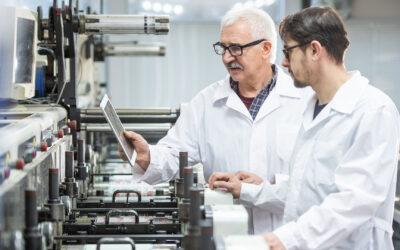A local food producer required large volumes of water to clean and sanitize equipment. Once used, the water would be stored in an on-site lagoon before being processed, treated, and released back into the water supply.
The producer’s water usage was increasing as the facility expanded and new equipment was implemented that needed to be cleaned. However, municipal regulations dictated when and where they could release water, as well as how much water they could process on-site.
To maintain compliance and reduce their water usage even as the facility grew, the food producer needed access to data to understand how water was being used across the plant.
The Requirements
The food producer required water meters to track usage and provide real-time data to Process Engineers. As part of the project, JAE Automation identified several additional requirements. These included:
- Integrating the water meters with existing automation systems and equipment
- Delivering reports and real-time data on water usage for all equipment and machines
- Ensuring the system could be integrated with future equipment and processes
- Maintaining compliance with local regulations
- Reducing water usage while meeting all food safety standards
The Engagement
JAE Automation had previously worked with the food producer on various automation initiatives and was already very familiar with the equipment, processes, and systems at the plant. The need to better track water usage came up during the regular support and design strategy meetings JAE Automation had with the producer.
Though some meters were already installed, more were required to provide a complete view. JAE Automation was selected to design the system, develop and build the reports, and conduct the integration work. Their ability to ask the right questions during the design stage and their deep understanding of how all the systems interacted with each other was valued by the producer.
The Solution
Off-the-shelf water meters were selected and installed by the food producer. JAE Automation scheduled the installation in a way that minimized disruptions to ongoing processes and mitigated the risk of costly interruptions or delays. JAE Automation also handled the integration and connected the meters to the automation systems and equipment already used by the producer.
Additionally, JAE Automation developed the reports using Rockwell Automation FactoryTalk VantagePoint. The reports would be updated daily, and data could also be viewed in real-time if required.
The Results
The meters provided the facility with a complete, real-time view of their water usage. With this information, Process Engineers were able to revisit washing programs that were using a lot of water and adjust or redesign them as needed.
The reports also allowed the facility to view trends over time or identify sudden changes in usage that could indicate an issue. This made it easier to conduct preventative maintenance and be proactive if a certain process or piece of equipment was using more water than usual.
Finally, by analyzing the data, the producer determined that water used for simple rinses could be recaptured and reused in other parts of the facility before being sent to the lagoon. This water reclamation initiative only became apparent after they had access to a complete view of their facility, and it allowed the food producer to further reduce water usage beyond what was expected at the beginning of the project.



